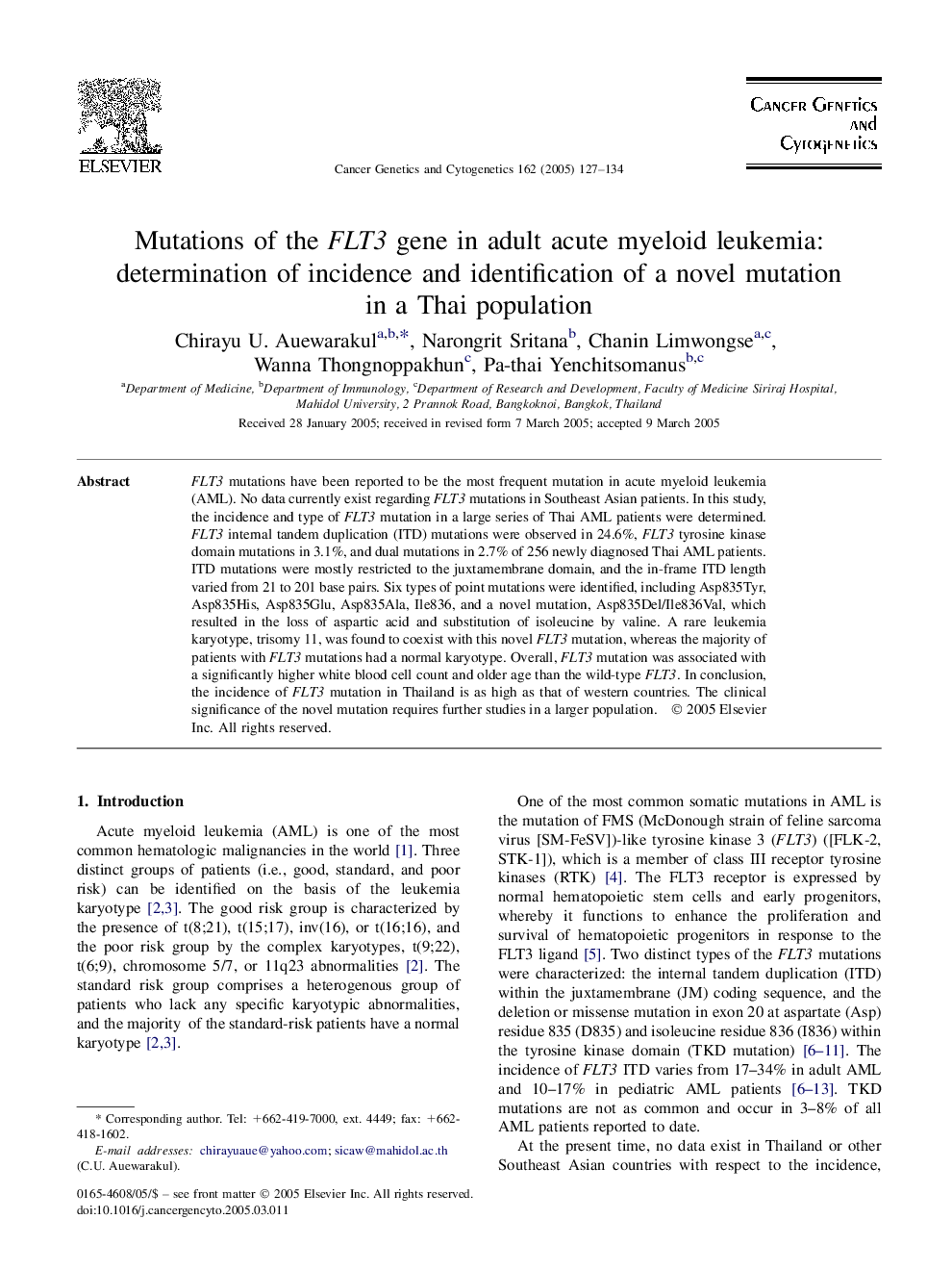| Article ID | Journal | Published Year | Pages | File Type |
|---|---|---|---|---|
| 10897776 | Cancer Genetics and Cytogenetics | 2005 | 8 Pages |
Abstract
FLT3 mutations have been reported to be the most frequent mutation in acute myeloid leukemia (AML). No data currently exist regarding FLT3 mutations in Southeast Asian patients. In this study, the incidence and type of FLT3 mutation in a large series of Thai AML patients were determined. FLT3 internal tandem duplication (ITD) mutations were observed in 24.6%, FLT3 tyrosine kinase domain mutations in 3.1%, and dual mutations in 2.7% of 256 newly diagnosed Thai AML patients. ITD mutations were mostly restricted to the juxtamembrane domain, and the in-frame ITD length varied from 21 to 201 base pairs. Six types of point mutations were identified, including Asp835Tyr, Asp835His, Asp835Glu, Asp835Ala, Ile836, and a novel mutation, Asp835Del/Ile836Val, which resulted in the loss of aspartic acid and substitution of isoleucine by valine. A rare leukemia karyotype, trisomy 11, was found to coexist with this novel FLT3 mutation, whereas the majority of patients with FLT3 mutations had a normal karyotype. Overall, FLT3 mutation was associated with a significantly higher white blood cell count and older age than the wild-type FLT3. In conclusion, the incidence of FLT3 mutation in Thailand is as high as that of western countries. The clinical significance of the novel mutation requires further studies in a larger population.
Related Topics
Life Sciences
Biochemistry, Genetics and Molecular Biology
Cancer Research
Authors
Chirayu U. Auewarakul, Narongrit Sritana, Chanin Limwongse, Wanna Thongnoppakhun, Pa-thai Yenchitsomanus,
